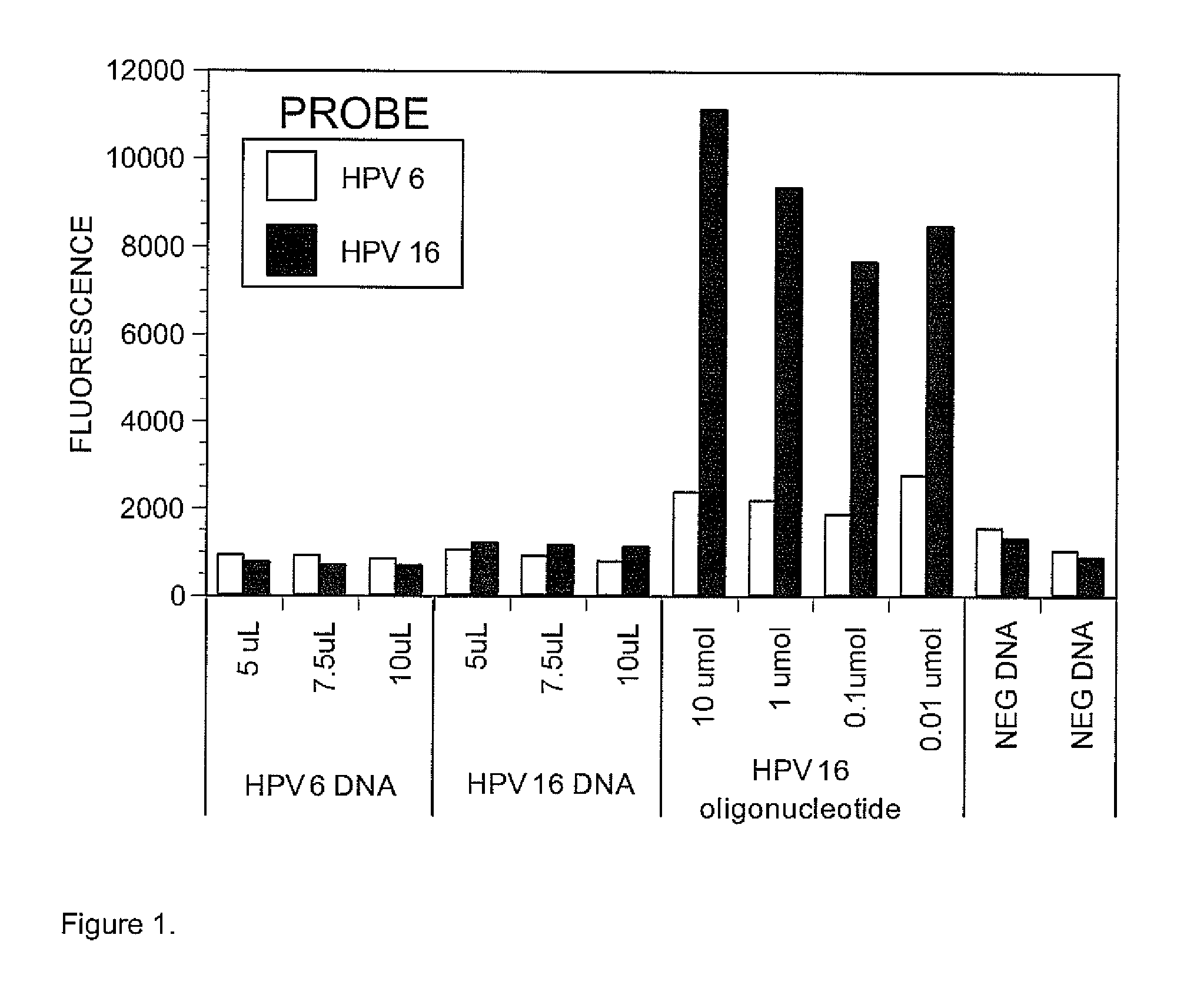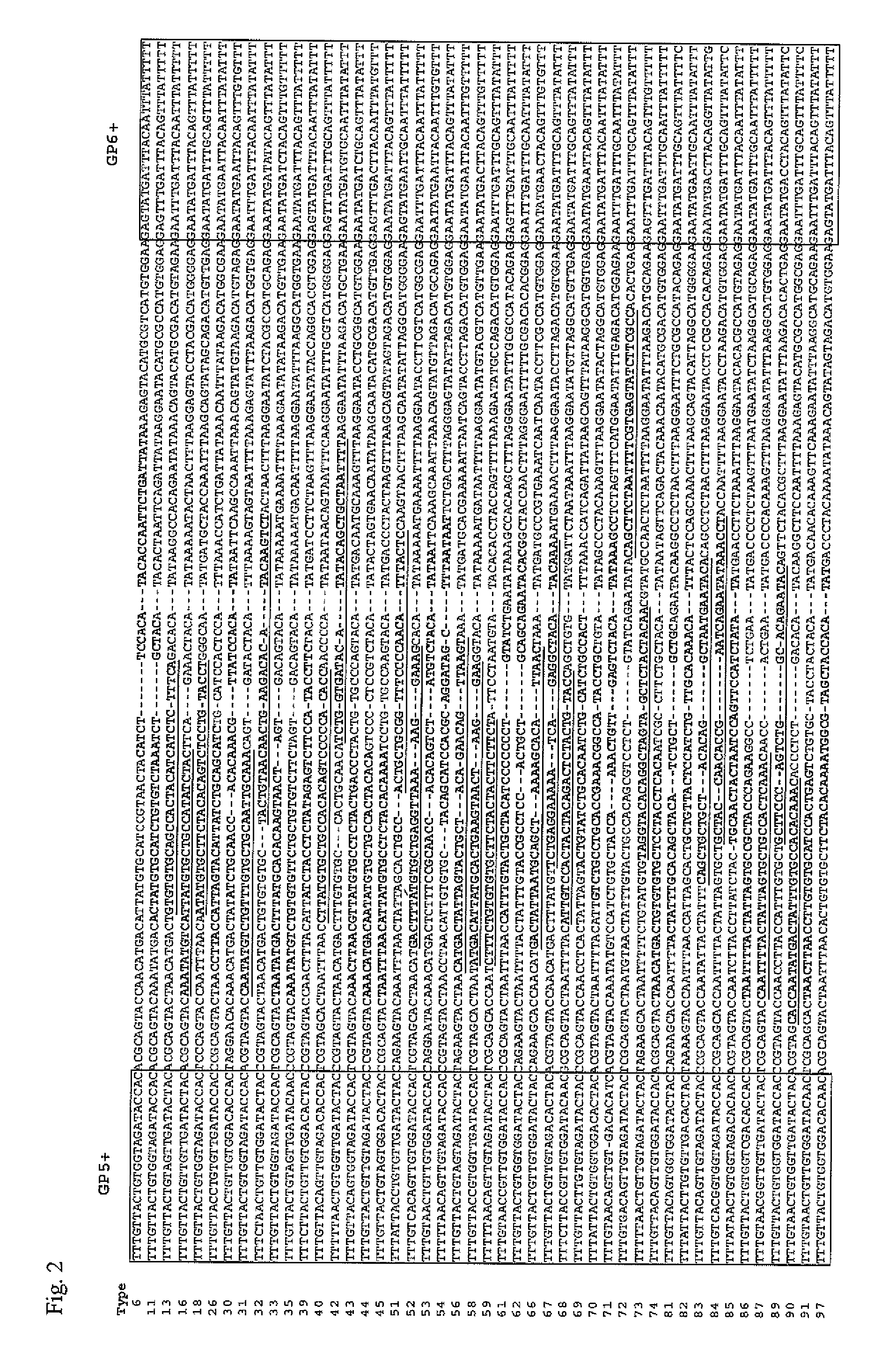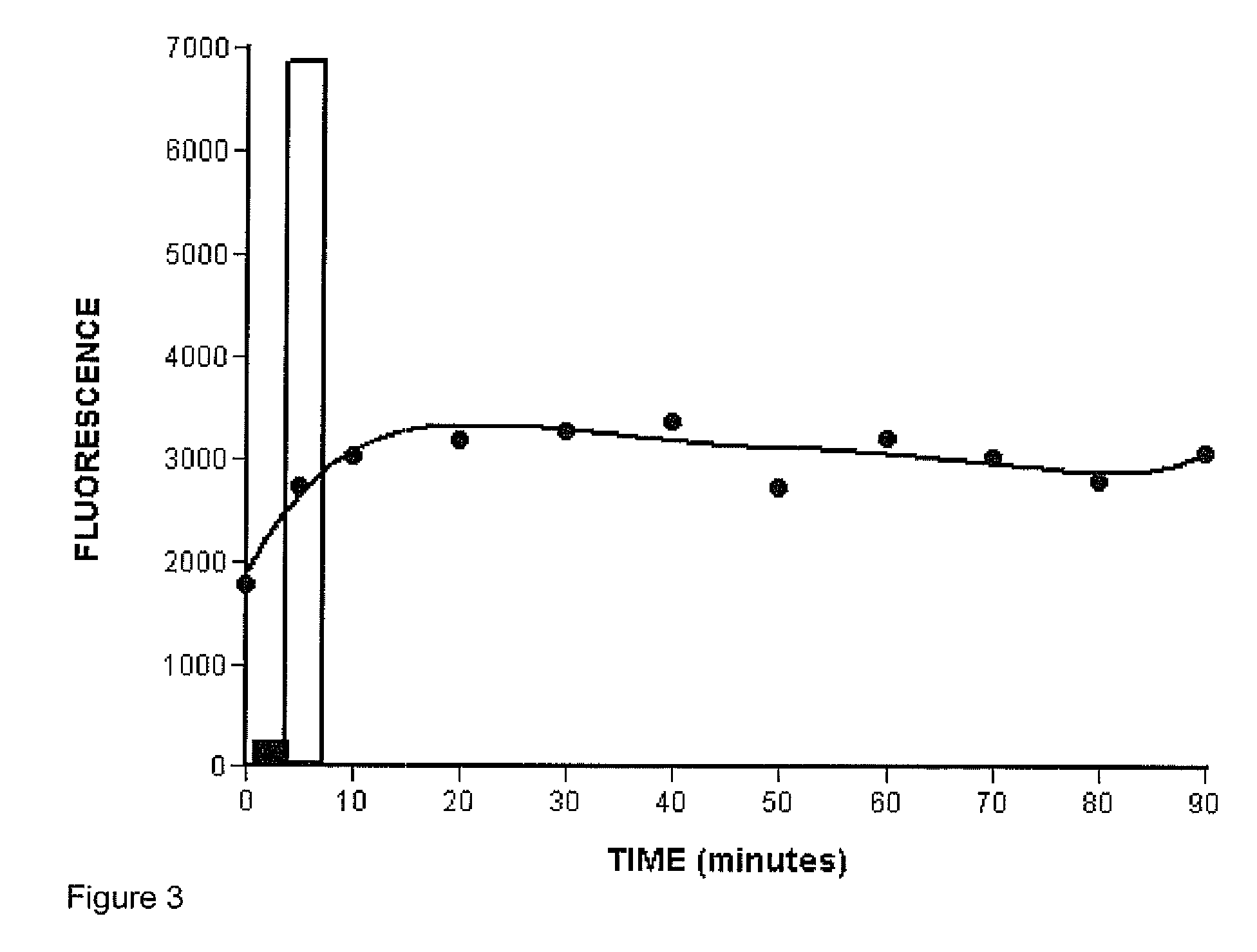Set of probes for the detection and typing of 46 human papillomavirus mucosal types
a technology of human papillomavirus and probes, which is applied in the field of human papillomavirus genotypingreagents and methods, can solve the problems of less efficient pcr amplification methods in amplifying dna from samples, and achieve the effect of accurate prevalence results and easy automation
- Summary
- Abstract
- Description
- Claims
- Application Information
AI Technical Summary
Benefits of technology
Problems solved by technology
Method used
Image
Examples
example 1
Design and Selection of Probes
[0070]The probes were targeted at the region of the L1 gene comprised between the GP5+ / GP6+ primers (Roda Husman et al., 1995). This is a relatively poorly conserved region bracketed by two conserved regions were the GP5+ / GP6+ primers bind. The length of this segment varies slightly among different types and, for example, it is 141 bp long in HPV16, corresponding to nt 6624 to 6764 of the sequence published by Flores et al., 1999 (GenBank accession no. AF125673).
[0071]Previous literature on the use of Luminex Xmap technology for detecting DNA sequence typically reported the use of 20 nt long probes. We therefore designed first 20 nt long probes, using the ArrayDesigner computer software (Premier BioSoft International) (Table 1), but preliminary experiments with probes and DNA from HPV type 6 and 16 showed that these probes were not sensitive for the detection of HPV DNA under our conditions. As shown in FIG. 1, DNA amplified from HPV 6 and HPV 16 clones...
example 2
Effect of Exonuclease
[0074]Simple denaturation of the double-stranded PCR products followed by hybridization to the probes on the microspheres produced a fluorescence signal that was much lower compared to the signal produced by hybridizing the microspheres to biotin-labelled single-stranded oligonucleotides (FIG. 3). We suspected that rehybridization of the long strands of the PCR products might have been thermodynamically more favourable than the hybridization of the GP6+ strand to the short (30 nt) probe physically constrained on the microsphere. We therefore decided to remove the non-labelled strand of the PCR product using bacteriophage T7 gene 6 exonuclease, according to the method described earlier (Nikiforov et al., 1994). T7 exonulease is a 5′→3′ processive enzyme that rapidly degrades one of the strand on a duplex DNA molecule (Kerr and Sadowski, 1972). In order to protect the GP6+ strand, carrying the biotin label, and selectively digest only GP5+ strand, the first 4 nucl...
example 3
Typing of HPV
[0076]Specificity and sensitivity for each type was determined by adding PCR product from a known source of HPV, clones carrying the whole HPV genome, when available, or clones of the MY region of the genome amplified by PCR form clinical samples or synthesized using published genomic sequences (see Material and methods for a complete list). All clones were confirmed by direct sequencing and comparison with published HPV sequences.
[0077]Using the PCR amplification method, exonuclease digestion and microsphere hybridization described above, amplified HPV DNA from each type was hybridized to a mixture of the 46 types of microspheres carrying the 46 specific HPV probes. After hybridization, the microsphere mixture was analyzed by the Luminex LiquidChip 200 flow cytometer. Four negative controls, containing only host cell DNA, were run alongside the samples. The average background fluorescence of each bead in the controls was subtracted from the fluorescence of each bead of...
PUM
 Login to View More
Login to View More Abstract
Description
Claims
Application Information
 Login to View More
Login to View More - R&D
- Intellectual Property
- Life Sciences
- Materials
- Tech Scout
- Unparalleled Data Quality
- Higher Quality Content
- 60% Fewer Hallucinations
Browse by: Latest US Patents, China's latest patents, Technical Efficacy Thesaurus, Application Domain, Technology Topic, Popular Technical Reports.
© 2025 PatSnap. All rights reserved.Legal|Privacy policy|Modern Slavery Act Transparency Statement|Sitemap|About US| Contact US: help@patsnap.com



